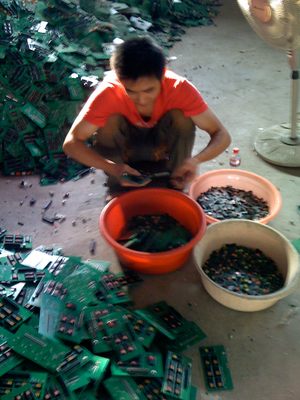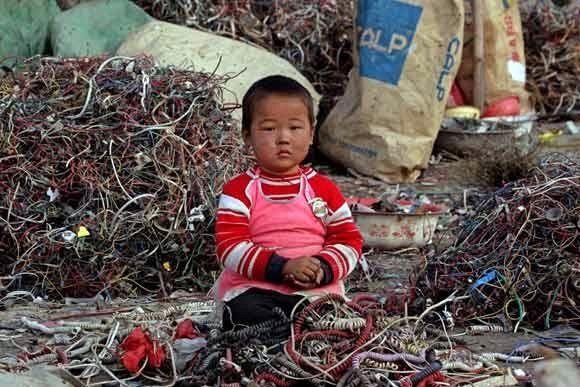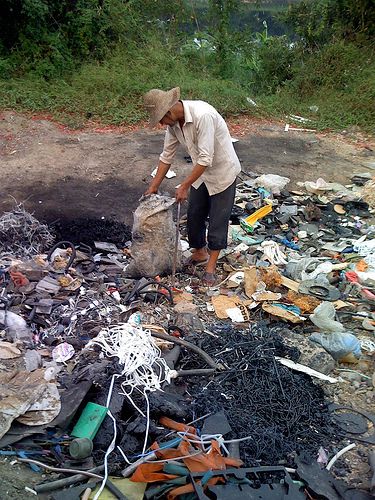About
A kind of horrific wonder, Guiyu is a town covered beneath a mound of e-waste - piles of computers, monitors, and cell phones.
Moore's law dictates the computing power of each new generation of electronic components but it also renders the previous generation obsolete. Companies feel the need to put a new product out on the market every few months. For a computer the average "life span" is 3 to 5 years, roughly the same as a house mouse. For an iPod it is only 2 years, roughly that of a stick insect. Most of these electronics begin their life somewhere in China, and China is where the journey for most of them ends. Some reports indicate that over 80% of so called e-waste eventually gets shipped off to Asia.
While manufacturing of electronic components is decidedly a high-tech industry, their disassembly is a much more "DIY" affair. Guiyu in the Guandong province is the biggest of China's e-waste villages. Here piles of discarded electronic gadgets are scattered around numerous junkyards, makeshift workshops and even in the streets themselves. Electronics are dissembled by the most basic methods. Transformer coils are untangled by hand to extract wires, and circuit boards are burned, cooked and dosed in acid to extract scraps of precious metals.
These methods, along with the e-waste itself, have made Guiyu into world's second-most polluted place on the planet. The air is full of toxic fumes, the soil has been saturated with lead, chromium, tin, and other heavy metals. The water is undrinkable and there is dioxin in the ash and lead in the river sediment.
E-waste started flooding into Guiyu in 1995 and a flood of migrant workers from the countryside came to claim the hazardous jobs. Central government tried to mitigate the situation after the alarm was raised by the media. While China has imposed a permanent ban on import of e-waste, the situation remains much the same in places like Guiyu and the e-trash is still flowing in.
Related Tags
Published
August 12, 2009

























